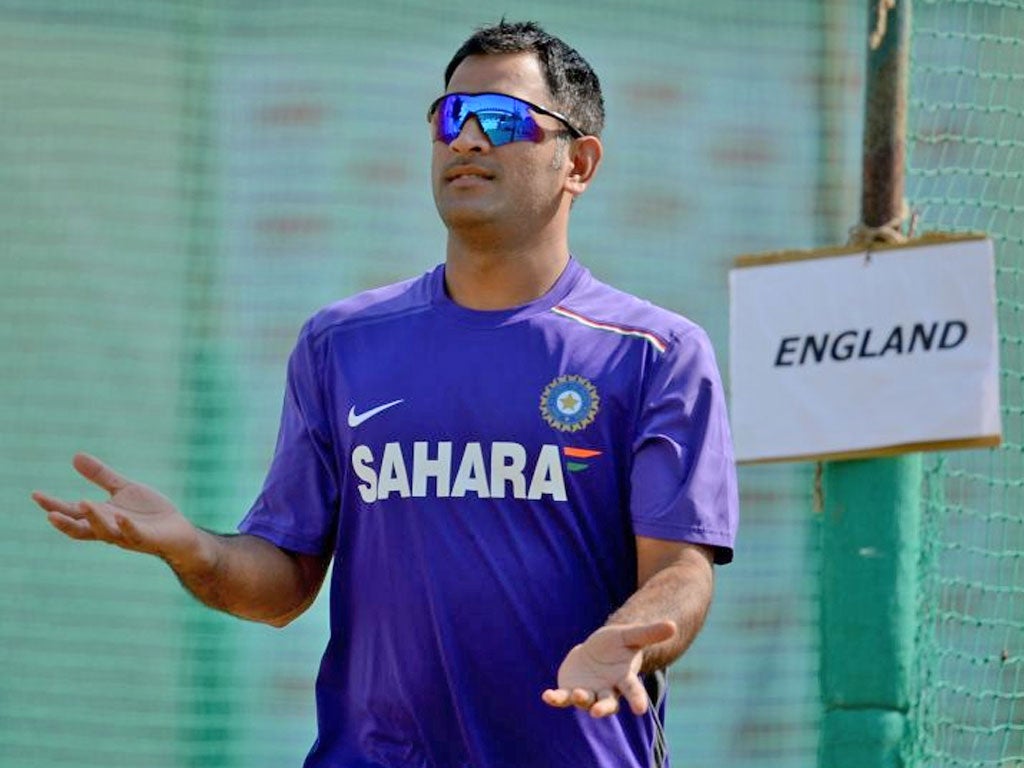Anand Vasu: Dhoni's dual burden comes into question after exhausting day
The Indian Angle

Your support helps us to tell the story
From reproductive rights to climate change to Big Tech, The Independent is on the ground when the story is developing. Whether it's investigating the financials of Elon Musk's pro-Trump PAC or producing our latest documentary, 'The A Word', which shines a light on the American women fighting for reproductive rights, we know how important it is to parse out the facts from the messaging.
At such a critical moment in US history, we need reporters on the ground. Your donation allows us to keep sending journalists to speak to both sides of the story.
The Independent is trusted by Americans across the entire political spectrum. And unlike many other quality news outlets, we choose not to lock Americans out of our reporting and analysis with paywalls. We believe quality journalism should be available to everyone, paid for by those who can afford it.
Your support makes all the difference.When Mahendra Singh Dhoni made his debut for India almost eight years ago, the most striking thing about the man was not his ability to manufacture big shots against good balls, his keeping wicket despite having fairly hard hands or his compact, muscular frame, although all three were rare commodities in Indian cricket. The Dhoni image that made him a star was his silky long hair, more rock star or model than aspiring cricketer from an eastern outpost.
Now, 68 Tests, 211 one-day internationals and 38 Twenty20 internationals later, the hair is worn in the short crop, not least because there's too much grey to hide and too little mane to put in a ponytail. If Dhoni's batting has undergone a noticeable metamorphosis – the pyrotechnics that lit up his first century, a whirlwind 148 against Pakistan in 2005, have been consigned to memory – his character too has changed. Gone is the mischievous smile, replaced by a deadpan expression that does not change in happiness or sorrow.
At the end of the fourth day's play here, when Alastair Cook had provided a masterclass in stoic resistance, when quick wickets could not be begged, borrowed or stolen, Dhoni remained unmoved. It's not as though the man has lost the ability to feel, rather he bears a burden that does not allow for spontaneous expression.
Every word he says is examined by a media constantly on the lookout for a story that goes beyond the news, every lost game – and he endured eight on the trot recently – is touted as a sign of his fading Midas touch.
When Dhoni made the twin jobs of wicketkeeping and captaincy his own, he solved many problems for Indian cricket. Although no keeper had ever been given the captaincy on a full-time basis – Rahul Dravid was occasionally forced by circumstances to take the big gloves when he also led – Dhoni was the only man for the job.
Behind the stumps, India's quest for reliability began when Nayan Mongia was jettisoned in 2001 following suspicions of his involvement in illegal betting or matchfixing, although none of the charges against him was ever proven. In the period that followed, India used eight keepers, none nailing down a spot in any format of the game. While Dhoni was never a natural keeper, he was always a safe one. He looked clunky behind the stumps, and often did not even move towards the ball, as on Saturday when Pragyan Ojha had Kevin Pietersen stranded well down the pitch by a delivery that slid down leg, but he made very few obvious mistakes.
Very early in his captaincy, Dhoni made it clear that he did not expect to have a 100-plus Test career like some of the legends he shared a dressing-room with. This was not because he lacked the desire, but because he did not expect to be as durable. As one of the few senior Indian cricketers to play all three formats of the game, his workload was considerably higher than that of any of his peers.
On a day when India were kept on the field long and relentlessly ground out by Cook, Dhoni would have been left considering just how much the game took out of him. Clear to the naked eye are the bowling changes – and Dhoni did not bring on the spin of Yuvraj Singh until 101 overs had been bowled – and the traffic-marshall style waving of hands to adjust the field. What really drains, though, is having to think about the game incessantly. Where a tired bowler may have a sip of water and ponder about dinner resting up at fine-leg, or a batsman chat with his fellow fielder in the slips cordon, the captain is forever wondering where his next wicket will come from. Although the likes of Alec Stewart and Kumar Sangakkara have shown that it is possible to bear the dual burden, days like these will leave Dhoni wondering just how much longer he can go on.
Anand Vasu is managing editor of Wisden India – wisdenindia.com
Join our commenting forum
Join thought-provoking conversations, follow other Independent readers and see their replies
Comments